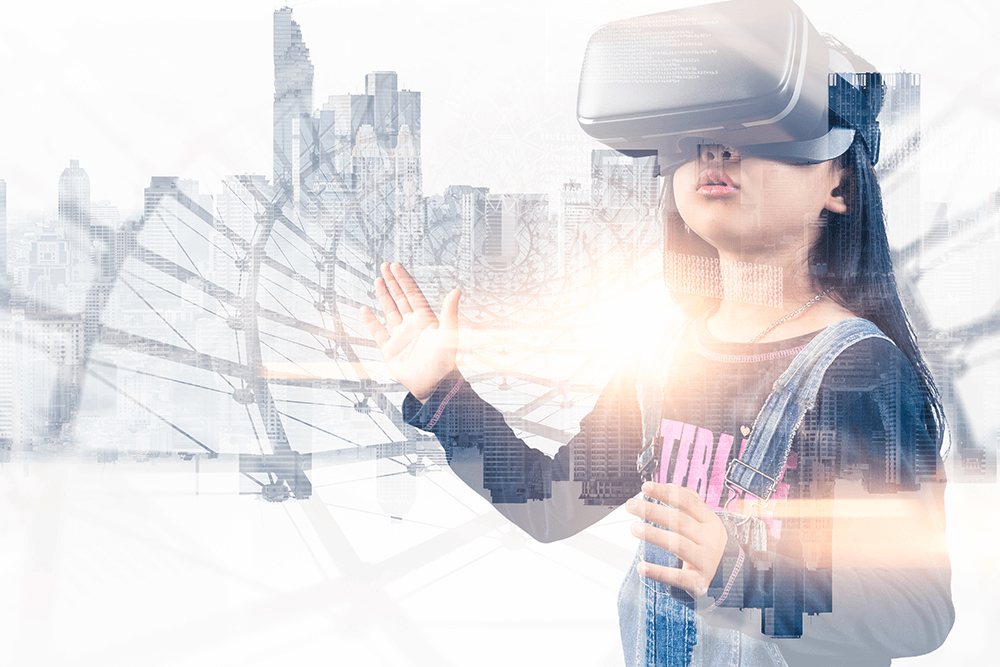The Top 5 Tech Trends That Will Disrupt Education – The EdTech Innovations Everyone Should Watch
2 July 2021
One solid indicator that EdTech is big business is the number of billionaires the sector created. According to Deloitte, the Chinese education market should reach $715 billion by 2025 and was responsible for creating seven new billionaires. The richest was Li Yongxin, who leads Offcn Education Technology that provides online and offline training for individuals who want to take civil service exams, but there were other EdTech business leaders represented. Here we consider the key technologies that underpin the EdTech revolution as well as the top 5 tech trends set to disrupt education in 2020.

A discussion about the top tech trends that will disrupt education must first begin with the technologies that will influence these trends.
Artificial intelligence will continue to fill gaps in learning and teaching and help personalise and streamline education. As students interact with connected Internet of Things (IoT) devices and other digital tools, data will be gathered. This big data and analysis of it is instrumental for personalised learning, determining interventions, and what tools are effective. Extended reality, including virtual, augmented, and mixed realities, helps create different learning opportunities that can engage students even further. Education is increasingly becoming mobile, and educational institutions are figuring out ways to enhance the student experience by implementing mobile technology solutions. Of course, this technology requires a capable network to handle the traffic demands, and 5G technology will provide powerful new mobile data capabilities. Finally, blockchain technology offers educational institutions to store and secure student records.
Top 5 Tech Trends That Will Disrupt Education in 2020
1. More accessible education
There aren’t only financial considerations when speaking about how accessible education is. The UN estimates there are more 263 million kids globally who are not getting a full-time education. While there are many reasons for this statistic, such as access to a qualified educational facility, there are also issues with proper materials, learning accommodations, and more. Online learning makes education available to those even in remote areas as well as make it easy to share curriculum across borders. EdTech solutions can overcome many common barriers to a quality education.
Technology can improve access to education. Digital textbooks that can be accessed online 24/7 won’t require transportation to get to an educational facility or library during certain hours. Digital copies are relatively cheap to produce, so textbook fees aren’t as taxing for digital versions as they might be with physical versions that cost more to create. Similarly, translating physical textbooks into all the languages natively spoken is cost-prohibitive for publishers when they are producing only physical copies of books. Digital versions make these translations much more feasible.
Within the classroom, the ultimate accommodation for learning differences is called differentiated learning. This allows students to have learning that is tailored to their personal needs. This and student-paced learning where students can move through and review material at the speed they need is much more feasible when using technology. There are also tech solutions for students who have physical or learning disabilities.
2. More data-driven insights
Just like it does for other industries, technology can help educational institutions and educators be more effective and efficient. By analysing the data about how digital textbooks are consumed, or educational technology is used, valuable data-driven insights for how to enhance learning can be attained as well as provide info to make decisions about what tools aren’t effective. Technology, including big data, machine learning, and artificial intelligence, will also allow for more in-depth personalisation of the content for an individual’s learning needs. At the university level, data is no longer siloed into individual department’s Excel spreadsheets but is consolidated at the institution level, so insights can be extracted. With the assistance of data-driven insights to readily see where students need more support and what support is necessary, teachers are freed up to inspire students and change lives.
3. More personalised education
While a personalised education experience isn’t a novel concept, technology can make achieving it much easier. Today’s classrooms are diverse and complex, and access to technology helps better meet each student’s needs. Technological tools can free teachers up from administrative tasks such as grading and testing to develop individual student relationships. Teachers can access a variety of learning tools through technology to give students differentiated learning experiences outside of the established curriculum.
4. More immersive education
Extended reality encompassing virtual, augmented, and mixed reality brings immersive learning experiences to students no matter where they are. A lesson about ancient Egypt can literally come alive when a student puts on a VR headset and walks around a digital version of the time period. Students can experience hard-to-conceptualise current-day topics through extended reality, such as walking among camps of Syrian refugees. This technology enables learning by doing. Students are used to using voice interfaces at home when asking Alexa to define a word when doing homework, but this technology can also support learning and improve education in other ways. Chatbots can deliver lectures via conversational messages and engage students in learning with a communication tool they have become quite comfortable with, such as what CourseQ offers. Ultimately, if chatbots can make the learning process more engaging for students and reduce the workload on human educators, their use in education will continue to grow.
5. More automated schools
Many schools already rely on online assessments that are flexible, interactive, and efficient to deliver. Automation will continue to alter schools as more smart tools get incorporated, including face recognition technology to take attendance, autonomous data analysis to inform learning decisions so teachers don’t need to analyse data as well as help automate administrative tasks. When a student interacts with online technology, they leave a digital footprint that informs learning analytics. But automation will also help control building costs by automatically controlling lighting and heating/cooling systems and to help keep students safe with automated school security systems.
You might also like to have a look at this video, in which I outline the eight things every school must do to prepare for the 4th industrial revolution:
Related Articles
The 4 Myths Holding Back The AI Revolution, According To Nokia Bell Labs
By now, “smart” versions exist of just about every home appliance, gadget and gizmos we can think of. However, manufacturers continue[...]
Dreamforce 2025: Why I’m Excited About Salesforce’s Agentic Enterprise Revolution
By now, “smart” versions exist of just about every home appliance, gadget and gizmos we can think of. However, manufacturers continue[...]
Robots And AI Are Rewriting The Future Of Surgery
By now, “smart” versions exist of just about every home appliance, gadget and gizmos we can think of. However, manufacturers continue[...]
The 8 Biggest AI Trends For 2026 That Everyone Must Be Ready For Now
By now, “smart” versions exist of just about every home appliance, gadget and gizmos we can think of. However, manufacturers continue[...]
AI, Consciousness And Longevity: A Conversation With Deepak Chopra
By now, “smart” versions exist of just about every home appliance, gadget and gizmos we can think of. However, manufacturers continue[...]
AI Chatbots Are Quietly Creating A Privacy Nightmare
By now, “smart” versions exist of just about every home appliance, gadget and gizmos we can think of. However, manufacturers continue[...]
Sign up to Stay in Touch!
Bernard Marr is a world-renowned futurist, influencer and thought leader in the fields of business and technology, with a passion for using technology for the good of humanity.
He is a best-selling author of over 20 books, writes a regular column for Forbes and advises and coaches many of the world’s best-known organisations.
He has a combined following of 4 million people across his social media channels and newsletters and was ranked by LinkedIn as one of the top 5 business influencers in the world.
Bernard’s latest book is ‘Generative AI in Practice’.










Social Media